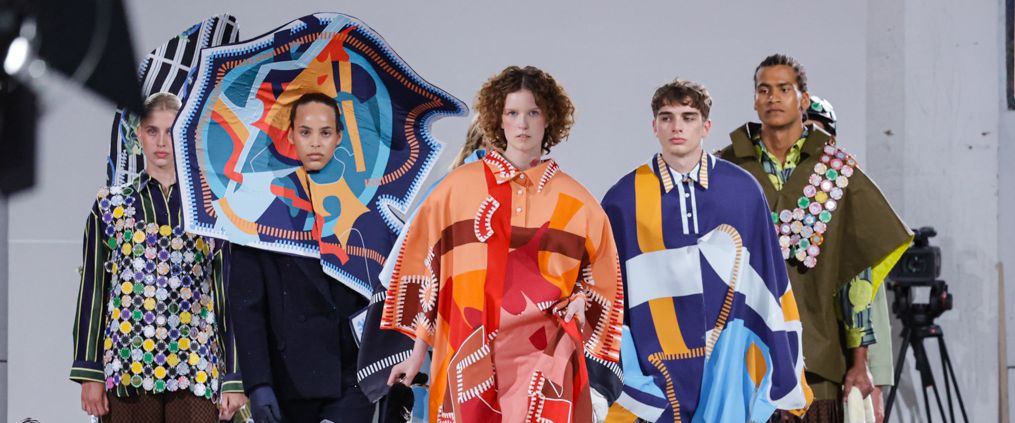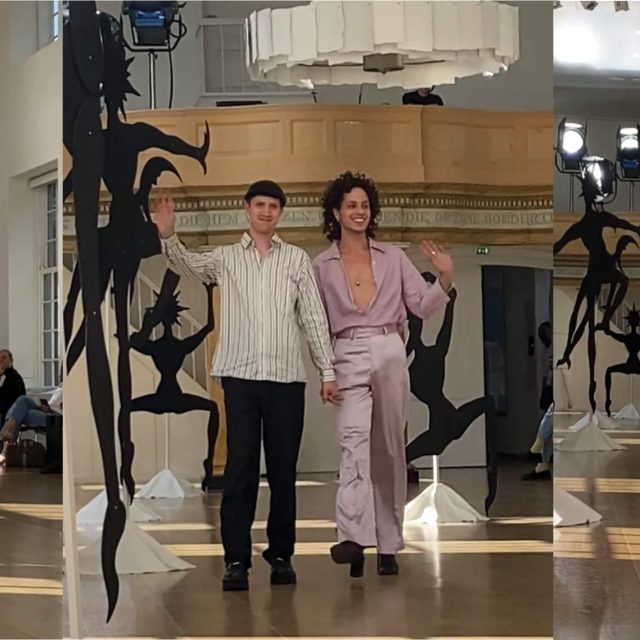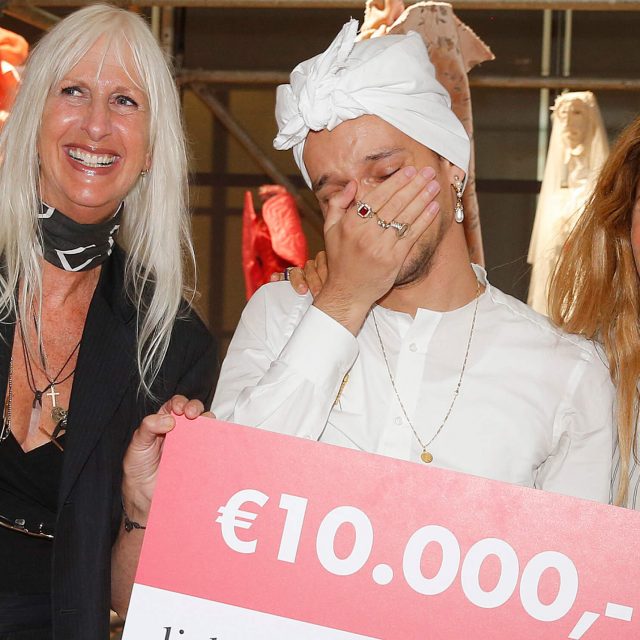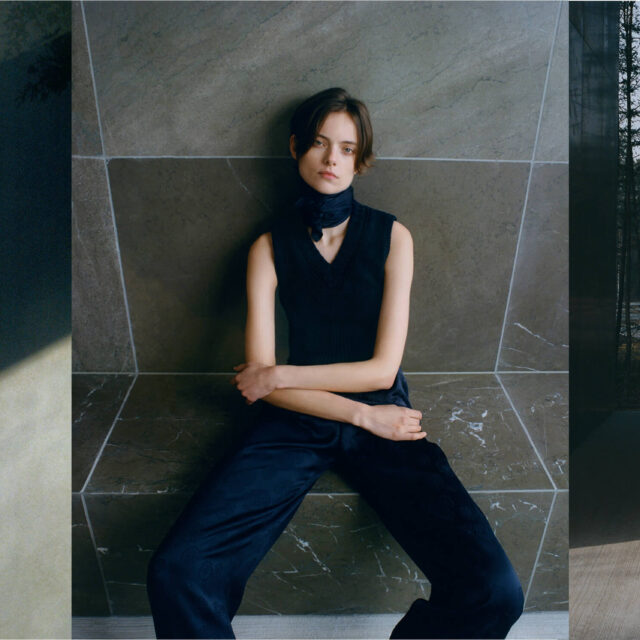After receiving an abundant amount of open call applications, the Lichting jury announced their selection of 10 final candidates that will be competing against each other for the Lichting 2023 title. Before their debut to the public during Amsterdam Fashion Week Edition 2023, AFW sat down with each participant to talk about their collection and their plans for the upcoming Lichting show. This week we would like to introduce you to Annalie van Doorn.
Can you tell me something about yourself and your trajectory as a fashion student?
Due to my parents’ divorce, I screwed up my Cito test and ended up in an agricultural school. There, we had to do things like draw cows in the meadow and funnily enough, I was caught only drawing dresses. I was trained to become a farmer, but already knew then that I wanted to do something with fashion. Hence, it was quite difficult to sit out those four years. After that, I went to Arnhem to study at the Rijn Ijssel. During these years, I managed to produce a few exhibitions, work with Lidewij Edelkoort, and help at the Arnhem Fashion Biennale. Because I suffered from a panic disorder, I realised I needed to slow down and postponed my dream of studying design. I went travelling for two years, simultaneously working in marketing and sales at a sustainable bag brand and in event management with my brother. At one point, I was sitting somewhere on a mountain in Guatemala and called my mother to say that I wanted to fulfil one more dream. That’s when I enrolled at the art academy in The Hague. When I came back to The Netherlands, I got asked by a group of designers from Story to tell Paris to make a collection and show it during Paris Fashion Week. In the meantime, I was also asked by Chanel Trapman from MUMSTER to participate in the making of the documentary ‘Full Circle’, which evolved around the circular collection I had made. All these experiences made me think that you can make a lot of noise if you just shout. Towards my graduation, I wanted to fulfil my long-lasting ambition of becoming a Lichting participant. You can imagine how happy I am now that I’ve made it amongst the 10 finalists.
How did the concept of your graduation collection come to being?
My graduation collection is inspired by my grandmother. She is 92 and still lives in a very large house that she built together with my grandfather. She has nowhere to go and has 20% of her sight left. Nevertheless, she dresses herself in the most extravagant outfits every single day, and even though she doesn’t have visitors, she makes sure to put on a full face of make-up. She is very obsessive with her appearance, and finds it very difficult to let go of that obsession. I always wondered what drives her to do this. On the one hand I think it’s worrying, but at the same time I know that it keeps her mood up. I come from a family where there was financial freedom, so where the kids played hockey, my sister owned a horse and we went on a holiday twice a year. My mother always took the piss out of this elitist, rather snobbish world she navigated in. In a way, my mother adopted a lot of my grandma’s behaviour towards status symbols, she however started to rebel against it. She would buy a cheap spencer and sew expensive buttons on it so that the people at the hockey club would immediately ask where she got that fancy spencer from. She absolutely loved that. I find this world so strange but so fascinating, so much so that I did a psychological study on the influence of status on our behaviour in the West, and how it manifests itself in my environment. This eventually set the tone for my collection. My sister comes from a horseback riding background, so I delved into Kentucky Derby culture. The people who come to these events dress so overly exaggerated, just to look at animal abuse for two minutes. I find it really bizarre, the different values they attach to objects and matter.
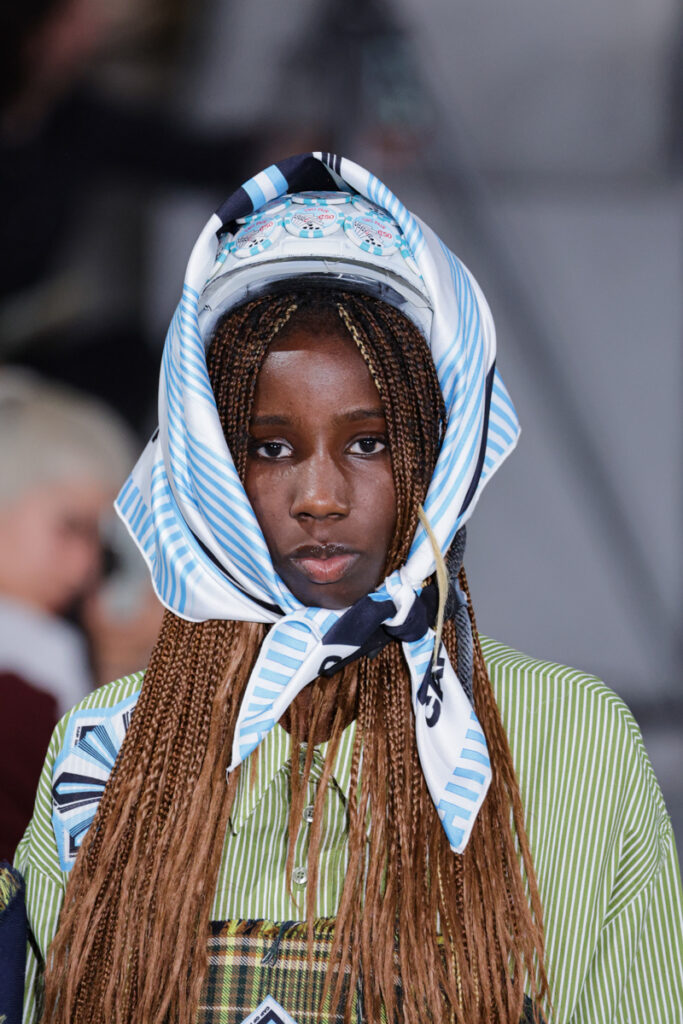
What important themes do you address with your collection?
I found out through my research that a lot of people in the West suffer from status anxiety, which is also one of the reasons why I started researching ostentatious consumption and fashion. I found out that we have a personal and a social identity. I learned a lot about our self esteem and what kind of identities we have. Your social identity is a perception and not a permanent state of mind, and it therefore can change over time. It is not a fact. As soon as you realise that, you automatically connect deeper to your personal identity which will increase your self esteem. In a sense, I want my collection to be a moment of awareness. At the academy, we’re all functioning in a bubble, where everyone is sustainable or is working towards being so, but I believe that if you really want to change something you first have to understand where things come from and why they are the way they are. This starts with understanding yourself. My collection is about this process of becoming aware, whilst also portraying my fascinations and hilarity I see in the elitist way of dressing.
How would you describe your signature as a designer? How does this reflect in your collection?
I did an internship at BOTTER, I think they influenced me a lot in my way of thinking and taught me to think faster in terms of storytelling and styling. What I have noticed there, is that I work in a way that is not self-evident. Because I paint a lot myself, I use imagery as my starting point and focus on shapes, surface divisions and colour. Then I make small abstract drawings which I cut out in different fabrics to eventually mould them on a mannequin. In this way, you get very innovative shapes. Then I look at the characteristic garments that fit within my design identity, such as a polo or a blazer, garments that exude elite. I look at how I can incorporate my shapes and abstract drawings into this garment so that it is taken to the next level.
Which piece from the collection are you most proud of? Why?
The last piece of my collection consists of an abstract drawing of a horse that is blown up in a really big polo, it has Hermes vibes in terms of colours too. I watched a lot of documentaries about the jockeys I mentioned before, blindly drawing what came to me and then eventually stumbled on an abstract drawing of a horse. I made that digitally and made sure that the horse’s head played a role in the silhouette of the polo. I also made an abstract drawing of a jockey, of which I literally used the print and its outline as the shape of the polo. In this sense my drawing became the pattern for the shape of the polo. In the first two looks I used one shape, both in a wrap dress and a blouse, for the second look however, I turned the shape upside down. I guess that this is a good example of my signature. Turning shapes into something accessible, but also something weird and interesting to look at.
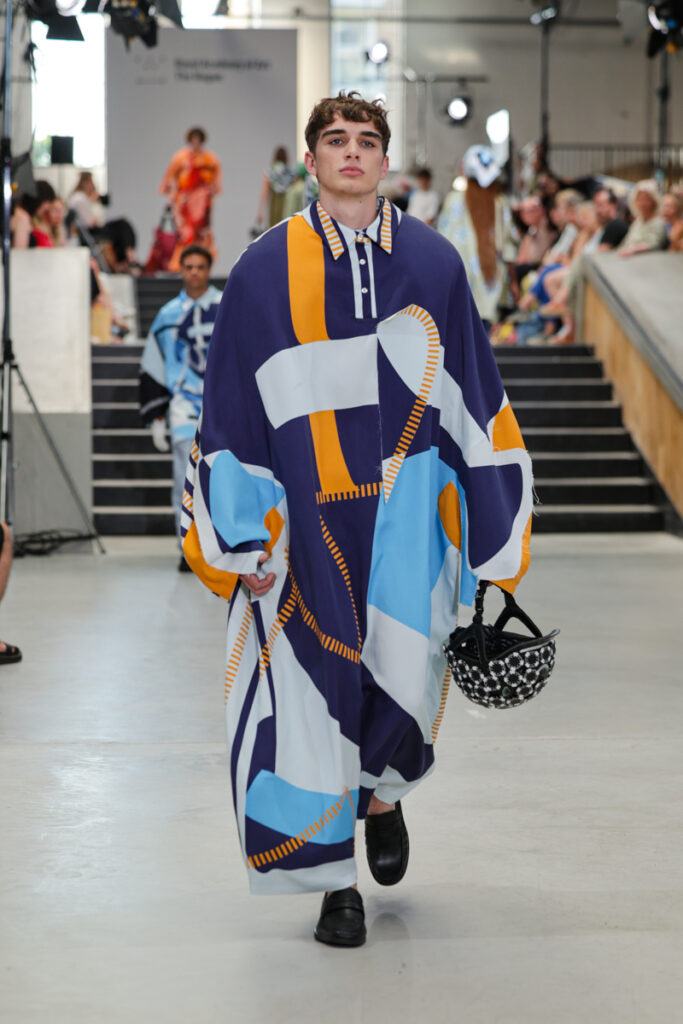
What would be the ideal way to present your collection to the public in September? Can you already say something about what you currently have in mind?
I want my clothes to speak for themselves and I think a traditional catwalk is the way to do so. I’ve thought a lot about rejecting the catwalk idea. You work towards something for 6 months, and even though you work so hard, in a blink of an eye it’s gone on the runway. Working for BOTTER however, made me realise that the excitement you create in those two minutes makes you intangible. People think it’s so special that they can attend this moment. This is a form of art that belongs to us as designers. And sure, it’s all blown up nowadays and every famous person has to be brought in to be seen front row, but still I think it’s something that is inherently very cool. That rush I felt during the BOTTER show in Paris showed me that this ecstasy of euphoria is really worth it.

